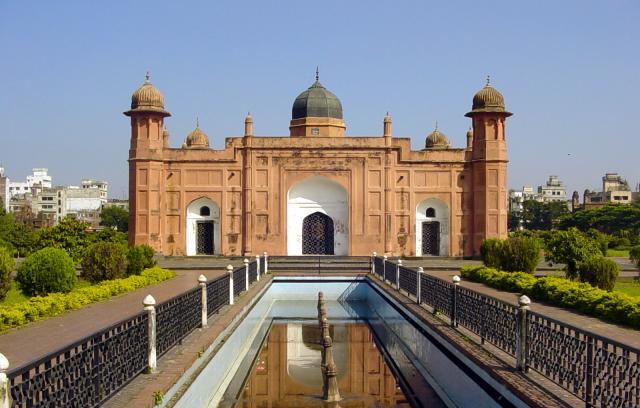Lalbagh Fort, An Awesome Historical Place To Visit In Dhaka!
Lalbagh Fort is the great architectural artwork by Mughal Empire in Bangladesh. The Fort is located in the southwestern part of Dhaka, the capital city of Bangladesh, which is commonly known as old Dhaka. The Lalbagh Fort is one of the most popular places among local inhabitants.
History of Lalbagh Fort
Subahdar (Governor) Mohammed Azam Shah, third son of Mughal Emperor Aurangzeb, later became emperor, began the construction of the Fort in 1678. Due to a sudden call from Delhi, Prince Azam handed over the incomplete Fort to new Subahdar Shaista Khan for completion.
While construction was continuing, Iran Dukht (locally known as Pari Bibi), the daughter of Shaista Khan had died there. After the death of daughter, the Subahdar started to consider the Fort as a bad omen and discontinued the work. The Fort remained incomplete, though Shaista Khan stayed in Dhaka up to 1688.
Read More 6 Cultural Heritage Sites In Southern Asia For Heritage Travelers
Three architectural monuments within the Fort were completed by 1684 — the Diwan-i-Aam and the Hammam on its west, the Tomb of Pari Bibi, and the Lalbagh Fort Mosque. There is also a huge garden in the Fort.
The Diwan-i-Aam and the Hammam
The two-storeyed Diwan-i-Aam is an elegant structure and only open monument to visitors of the Fort. The building is located in the east and attached with a single-storeyed Hammam (bath house) on its west. The Hammam building has an underground space for boiling water and a channel for sewage. A long wall leads north-south along the western frontage of the Hammam is separated the entire fort into two parts. The architectural memorial has a small but valuable museum where you can see coins, painting, calligraphy, carpets, swords, and firearms of the Mughal period.
The Tomb of Pari Bibi
The tomb of Pari Bibi is the most impressive and one of three focal architectural works of the Lalbagh Fort. The tomb is made of atypical construction materials, e.g., black basalt, white marble, and encaustic tiles of different colors have been used to decorate its interior, while the central chamber, where Pari Bibi is buried, is entirely surfaced with white marble.
The Lalbagh Fort Mosque
The three domes give the mosque an authentic view, though the domes are comparatively small than the large structure. With a water tank for ablution on the eastern side, the front gate of the Mosque is open to outside so people can enter the mosque.
Read More Architectures, The Art Tool Of Expressing Power
Gardens and Greeneries
There are beautiful flower gardens and green fields inside the fort property. Different colorful flowers and open green spaces have made the fort attractive to all people, especially to children. In fact, in this crowded city, the fort is a wonderful place to visit with friends and family, spend quality times in the greeneries, take photos and capture some moments with loved ones.
The fort is a wonderful place to visit with friends and family, spend quality times in the greeneries, take photos and capture some moments with loved ones.
Some Myths
Various myths have rambled around the Lalbagh Fort from the construction time to present date. It is widely believed among historical stories and debates that the Fort is the unfulfilled dreams of Prince Azam. When prince Azam went back to Delhi, the new Subahdar continued the construction but he stopped because of the unexpected death of his much-loved daughter Pari Bibi. Myths say Pari Bibi was engaged to Prince Azam. En passant, ‘Pari’ means fairy or beautiful lady in the locale. There is another myth about Pari Bibi; she was actually an Ahom princess, converted to Islam and married off to Prince Azam. However, on all debates, she was a loving daughter, short-lived beautiful lady, and a hapless beloved, who couldn’t accept the departure of her prince.
She was a loving daughter, short-lived beautiful lady, and a hapless beloved, who couldn’t accept the departure of her prince.
Read More A Heartfelt Poem “Single Magpie Singing”
Lalbagh Fort is locally recognized as Lalbagh Kella. Lalbagh Fort was the spectacle of the first fight for sovereignty against the British in 1857. However, once you come to visit the historical place, don’t forget to visit Khan Mohammed Mirdha’s Mosque, constructed during 1704–05, which is located around 500m past the entrance of the fort, and always lively and colourful Dhakeswari Temple, the central Hindu Temple of the city, which is located in the north of the fort.
Since you’re here… if you like or somewhat like this post, even don’t like this post leave a comment so we can improve. For more new contents, like or follow us on Facebook. We’re also on YouTube – please stay with our journey to excellence.
